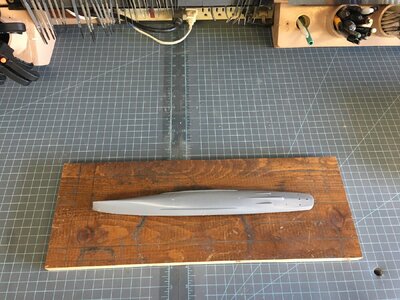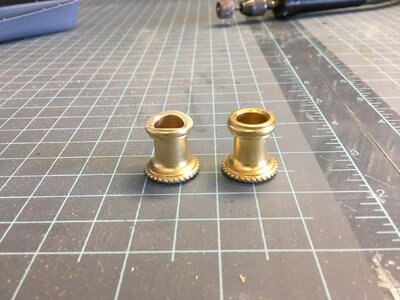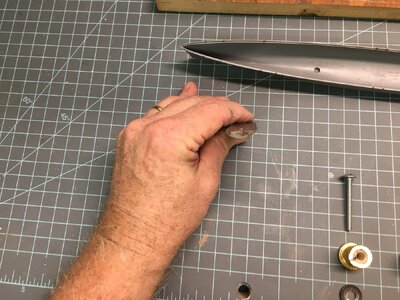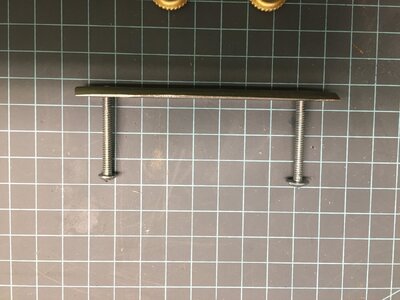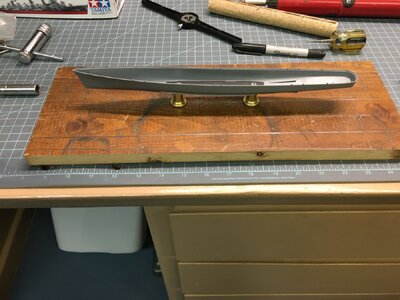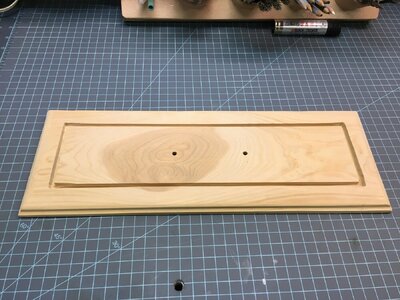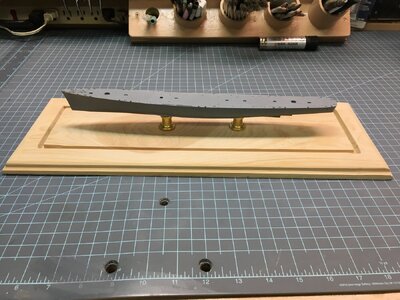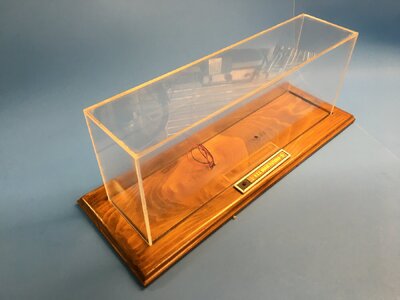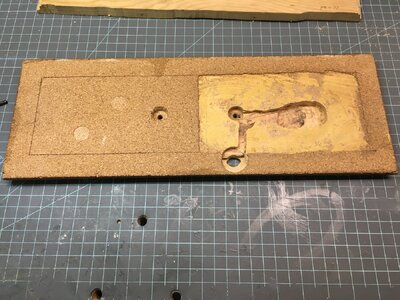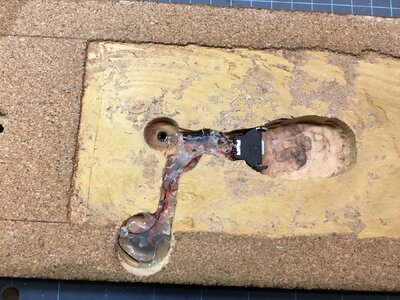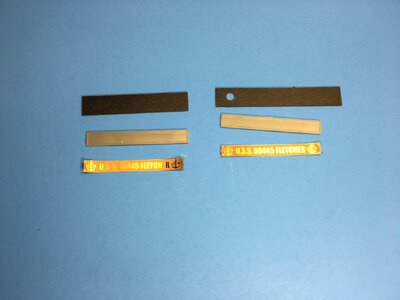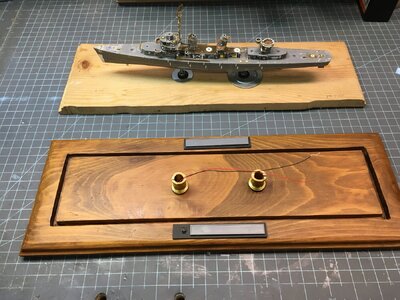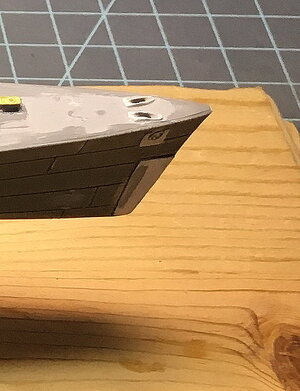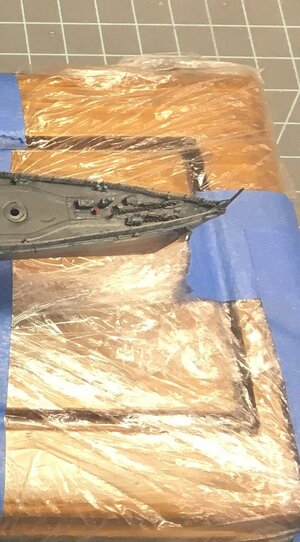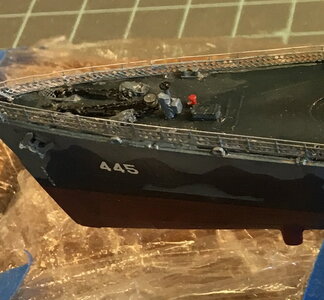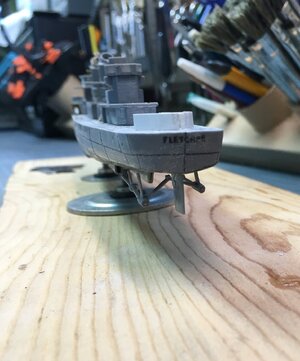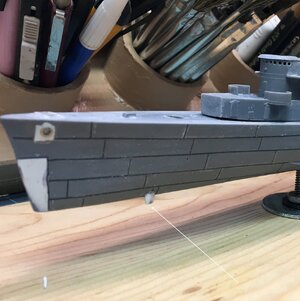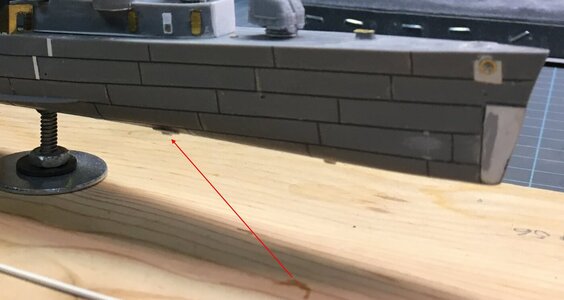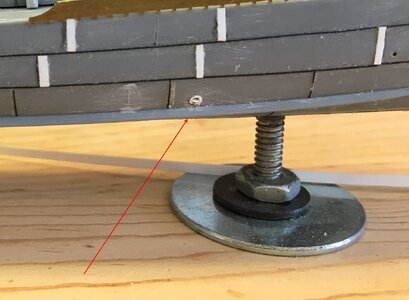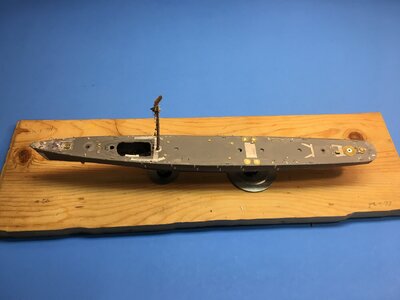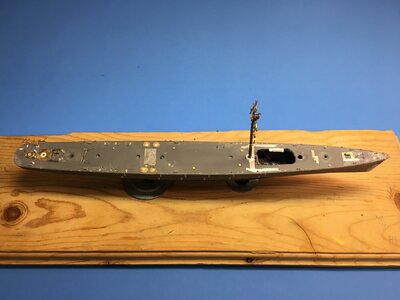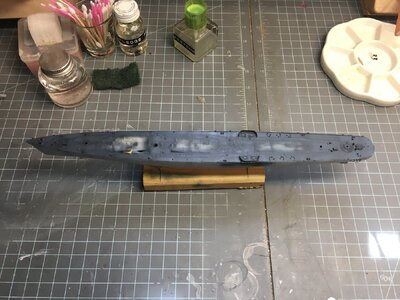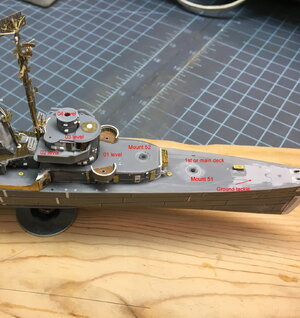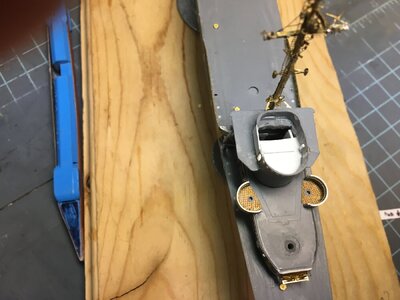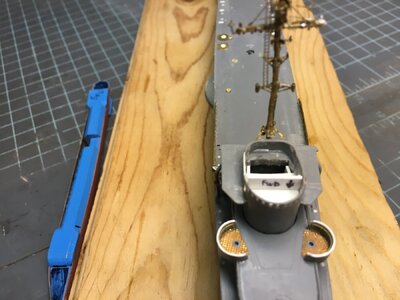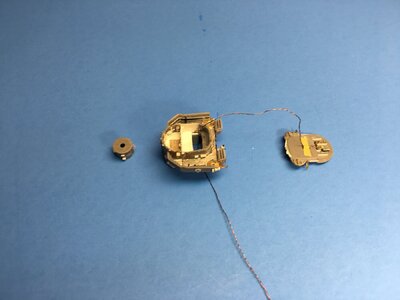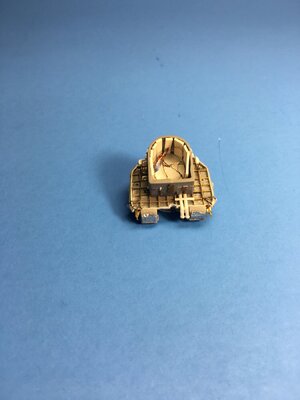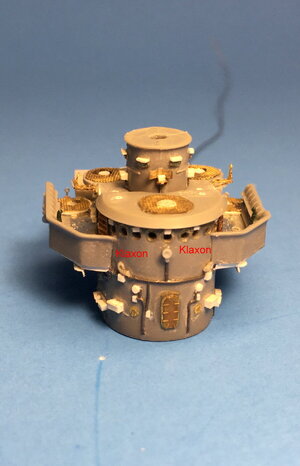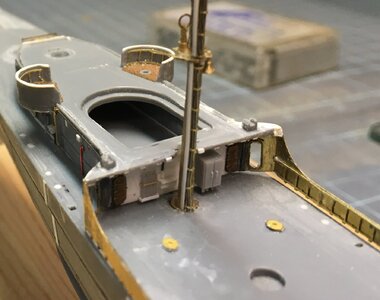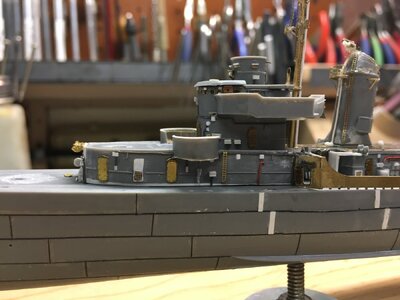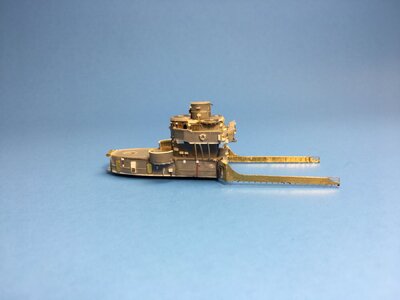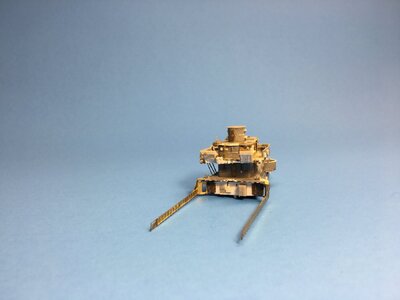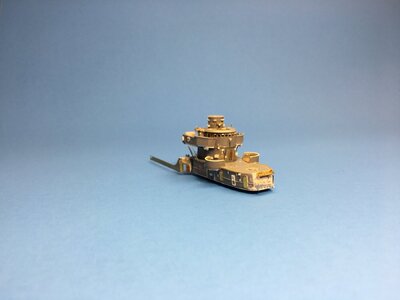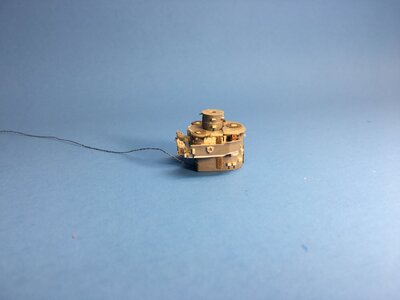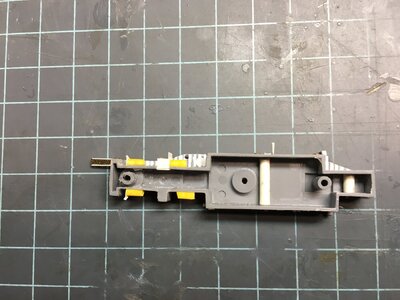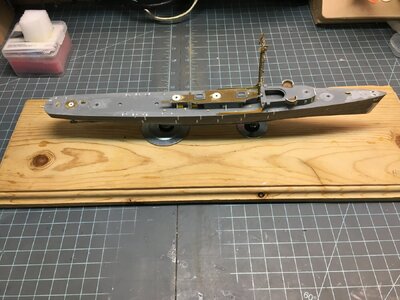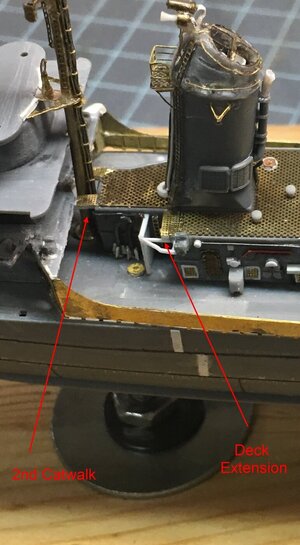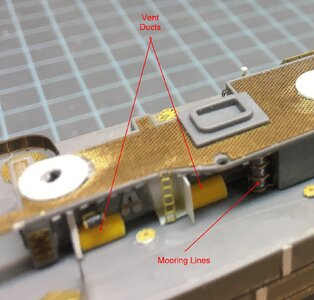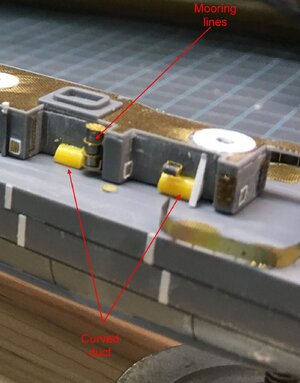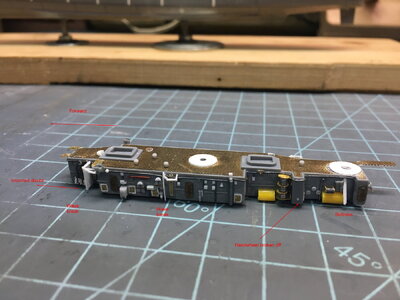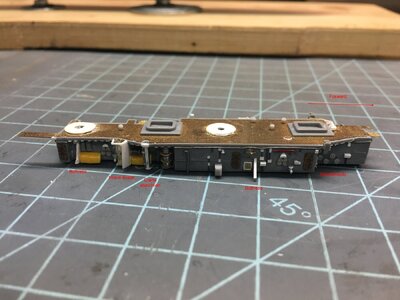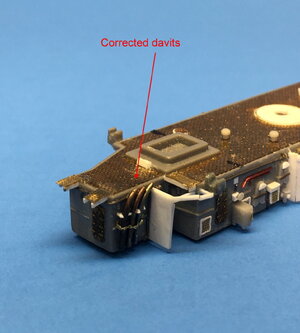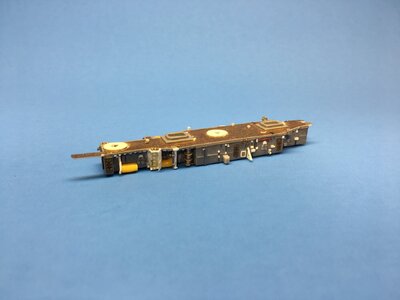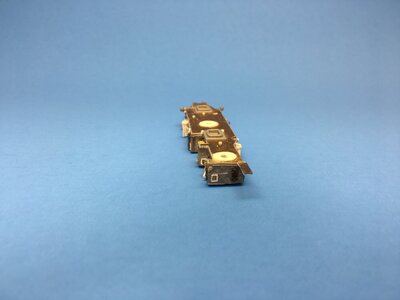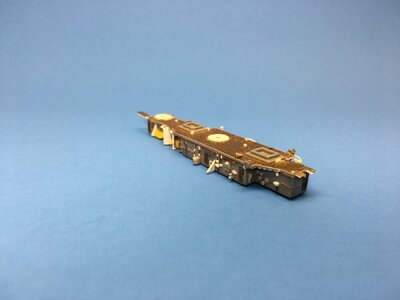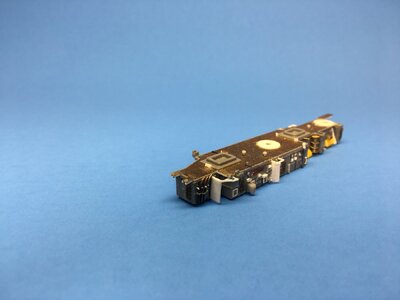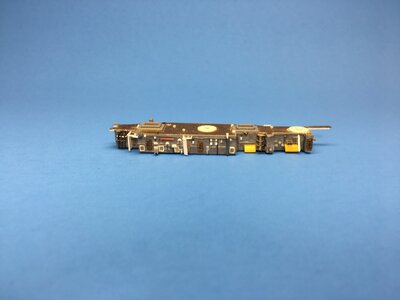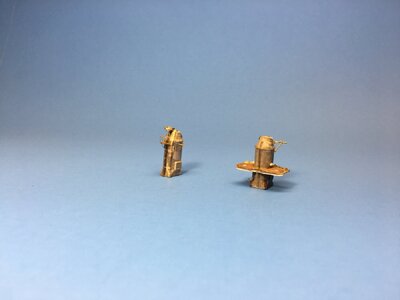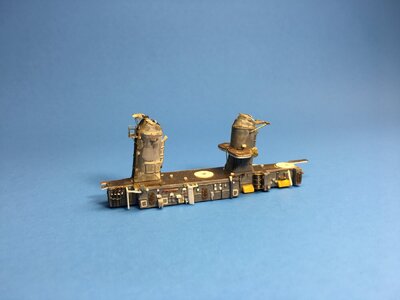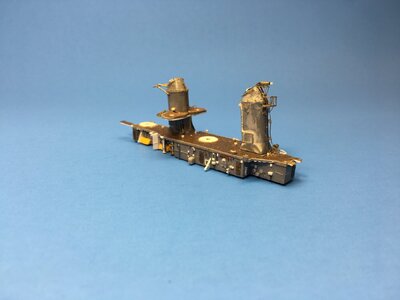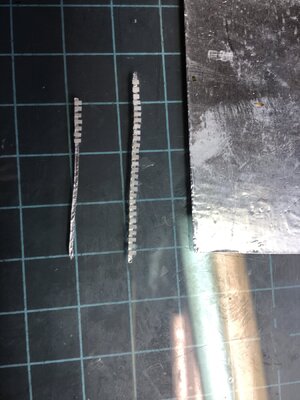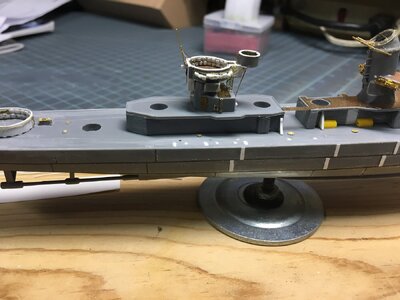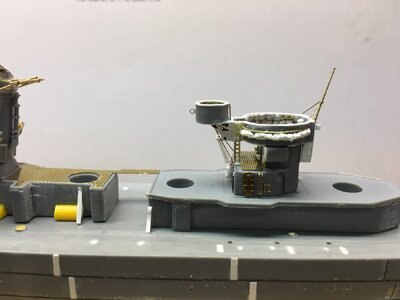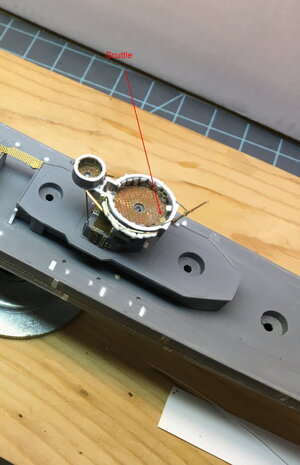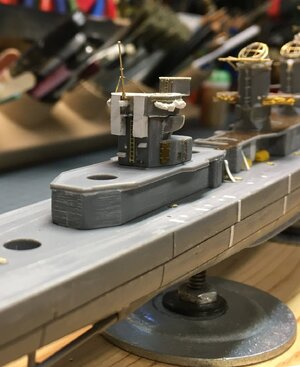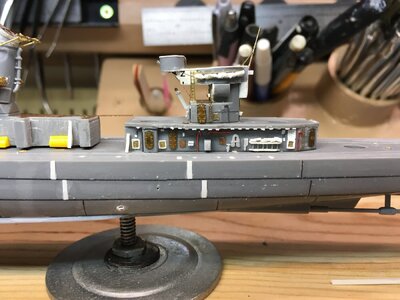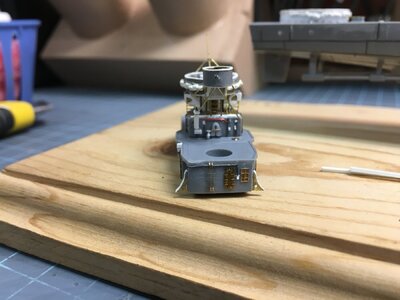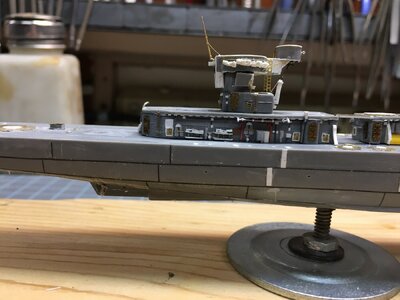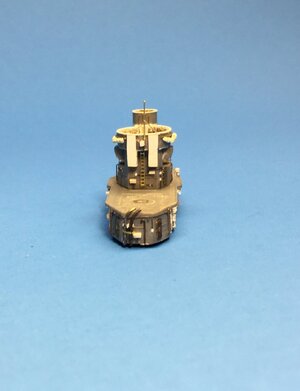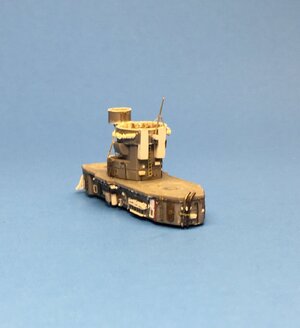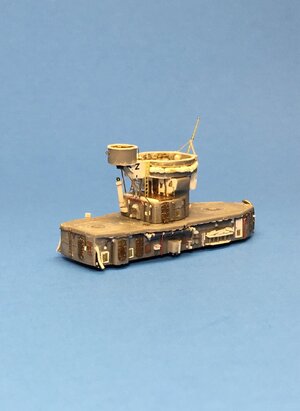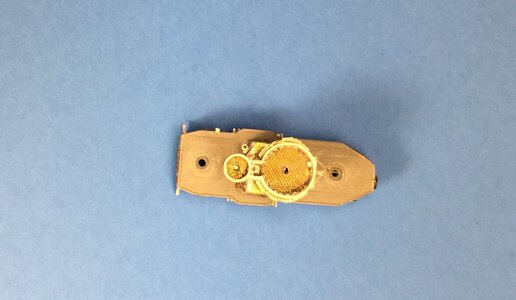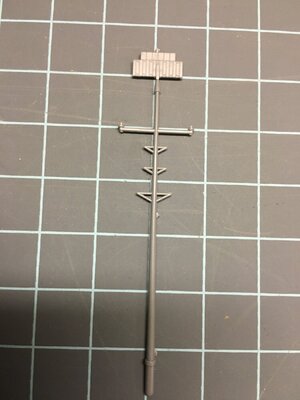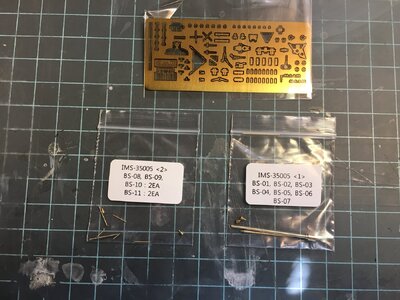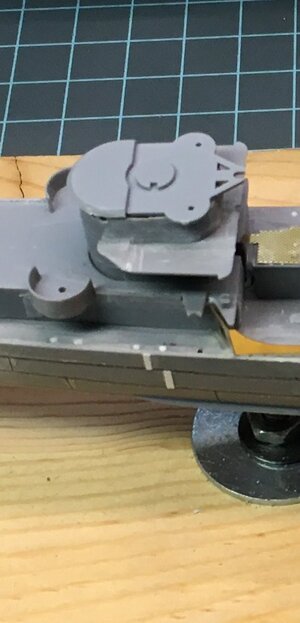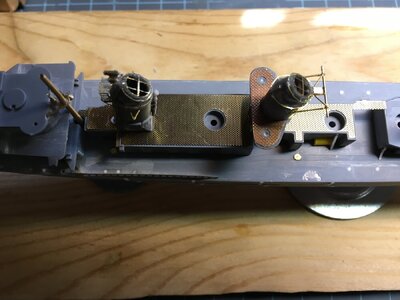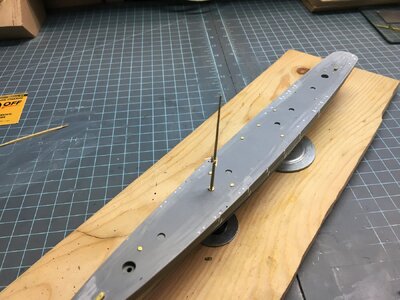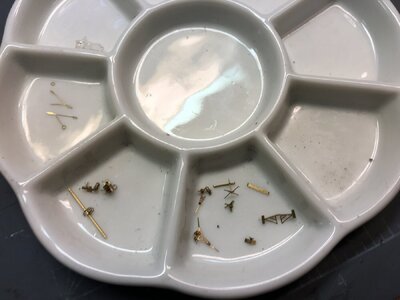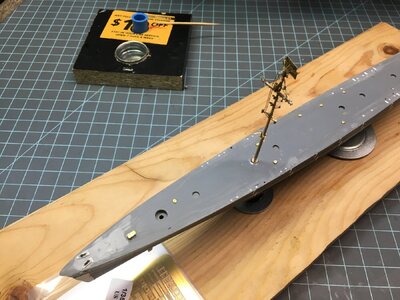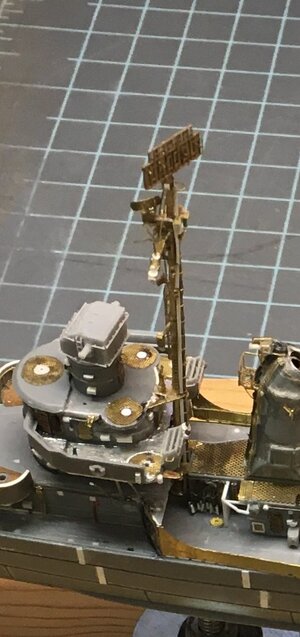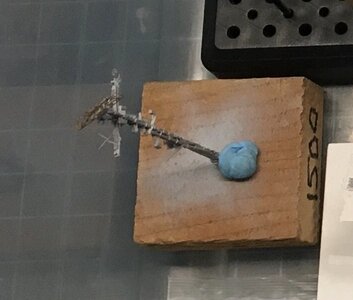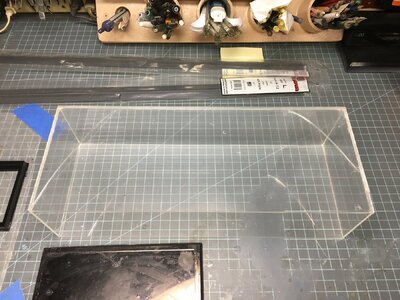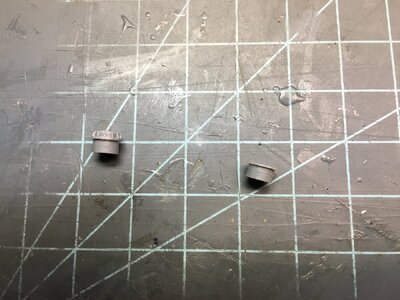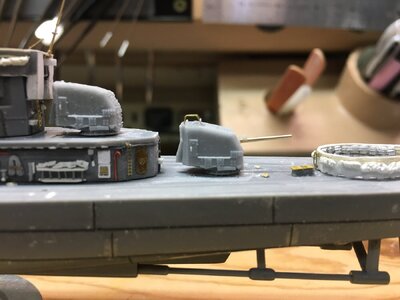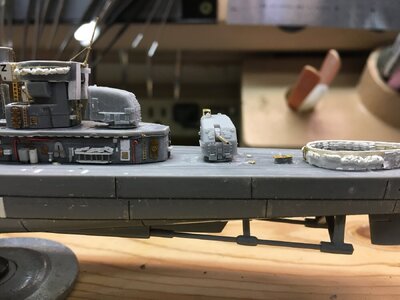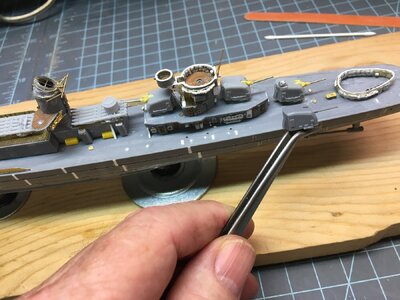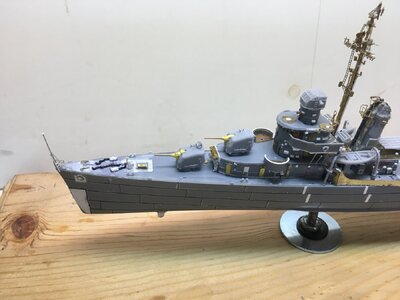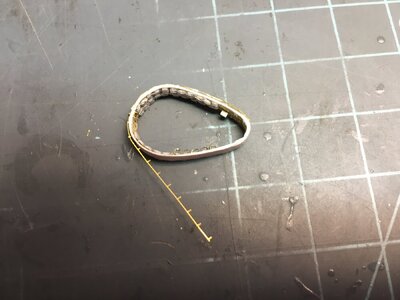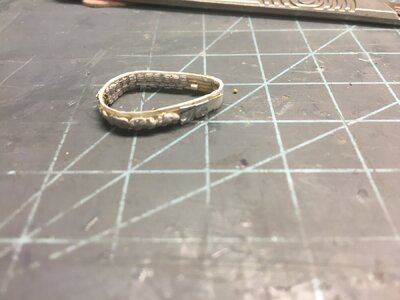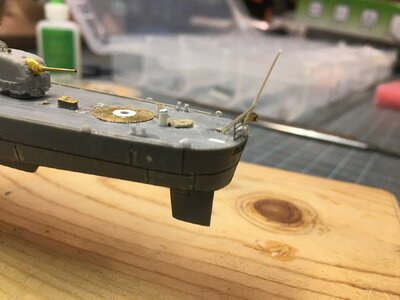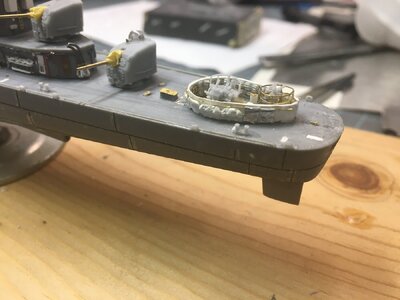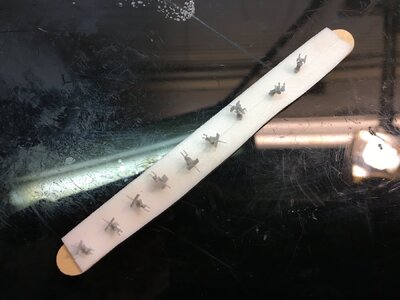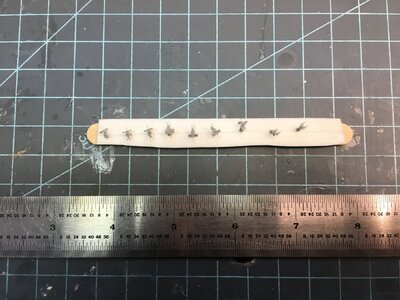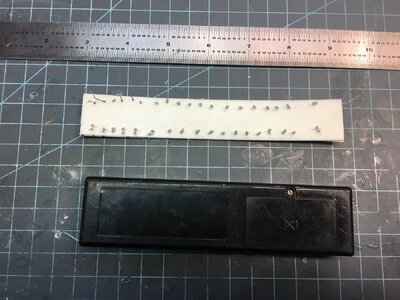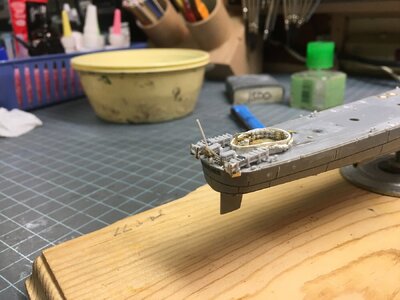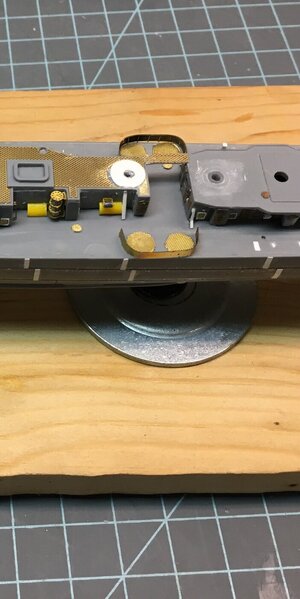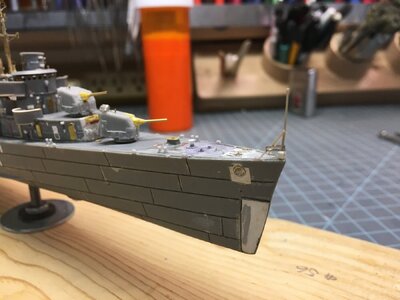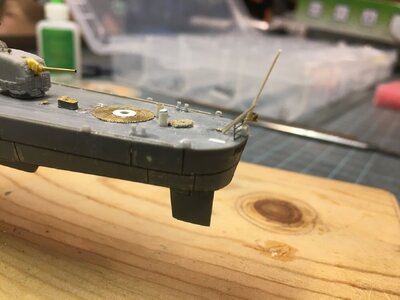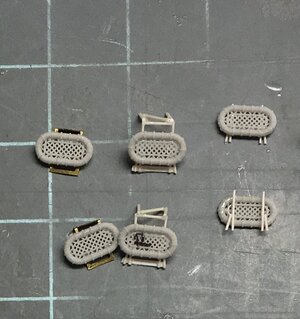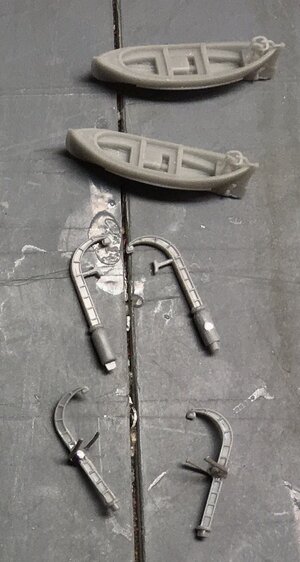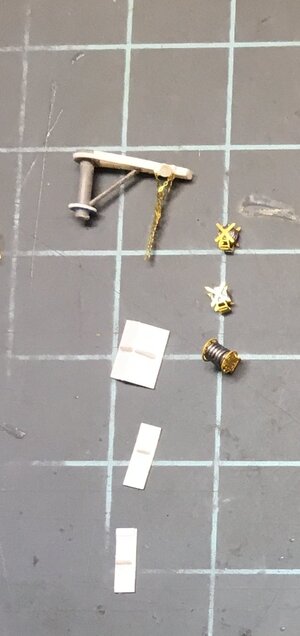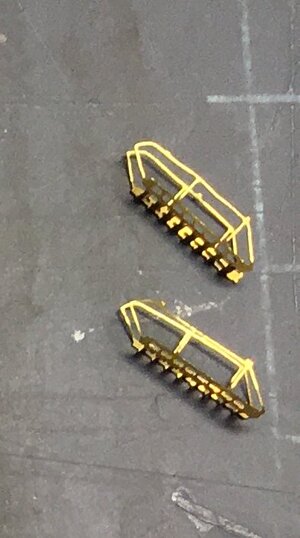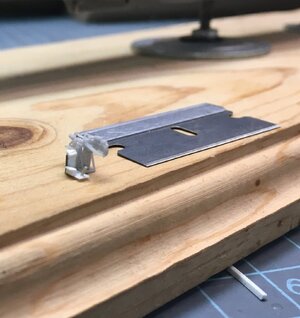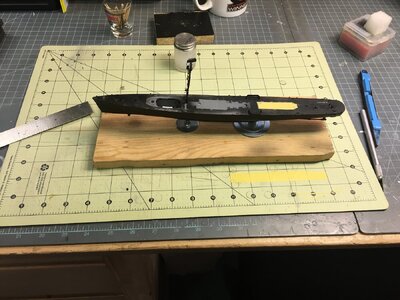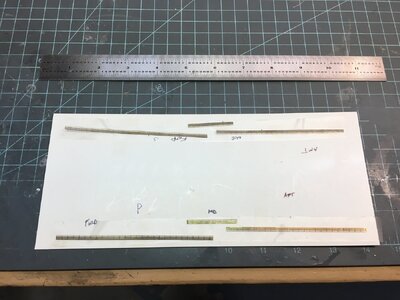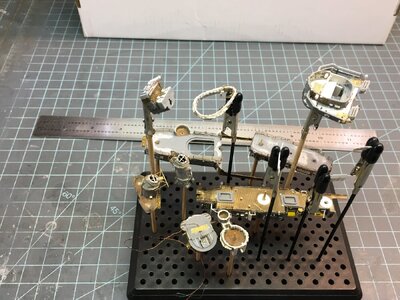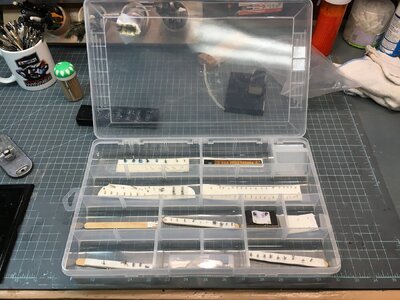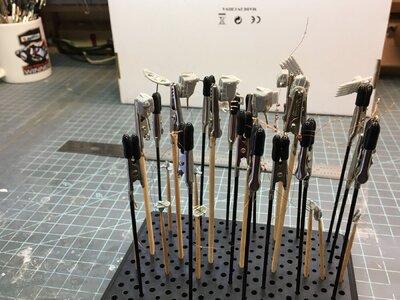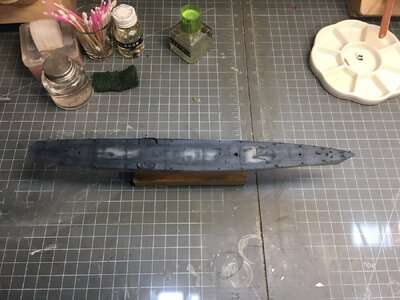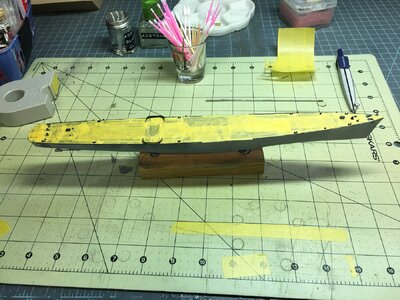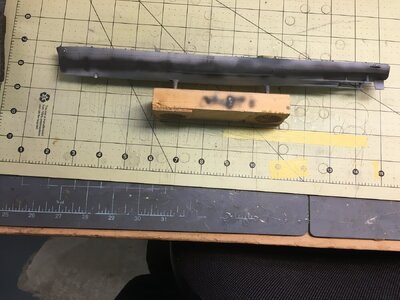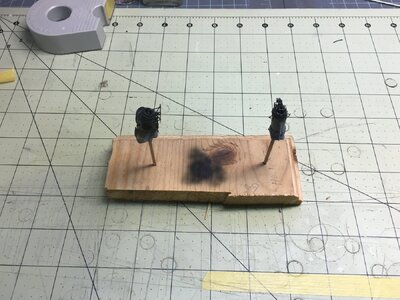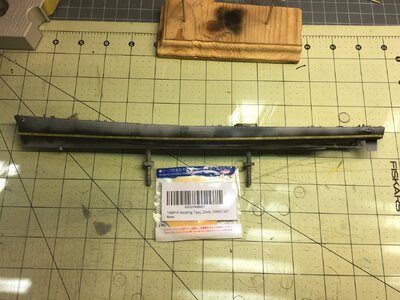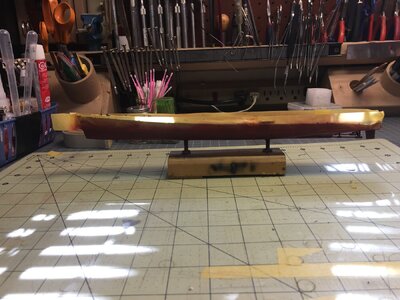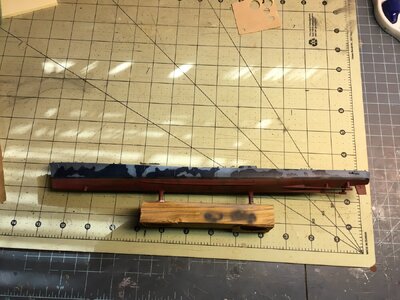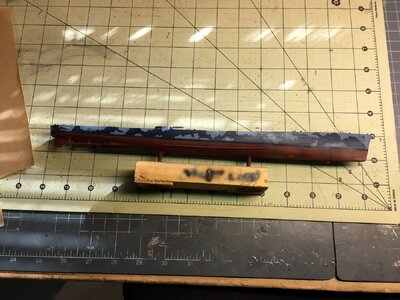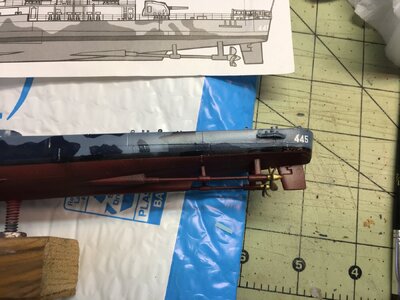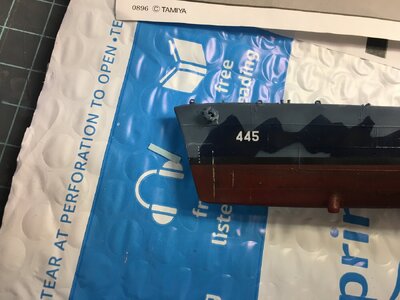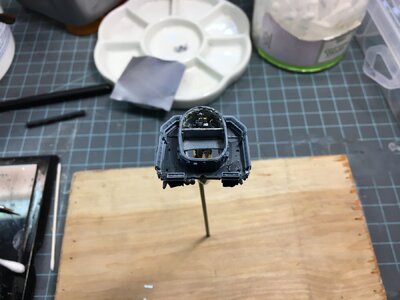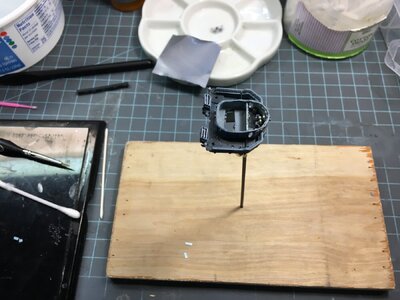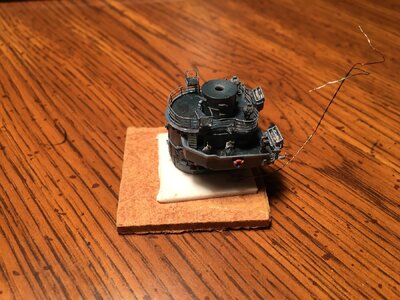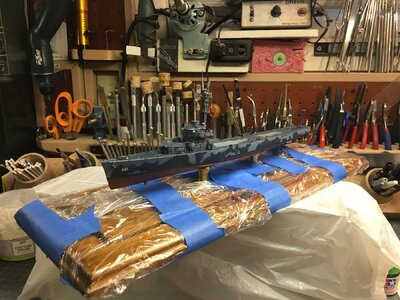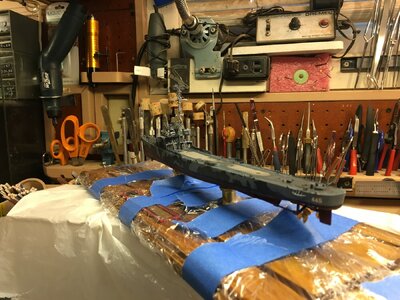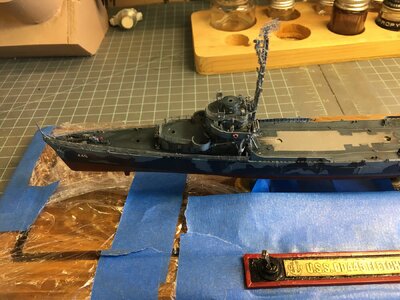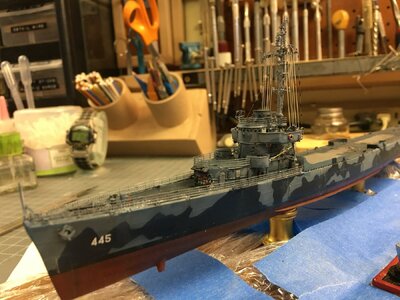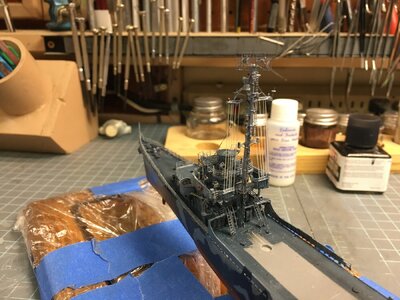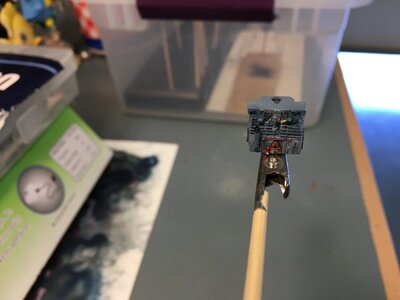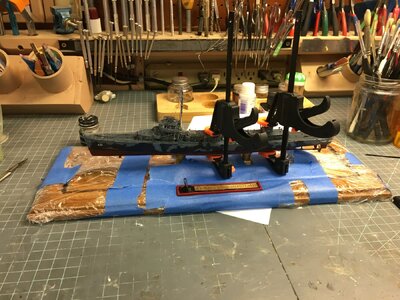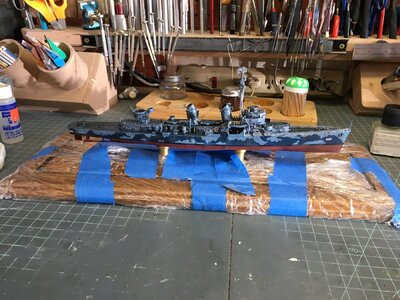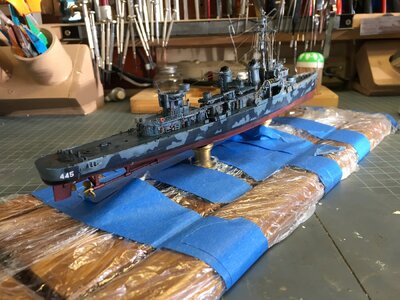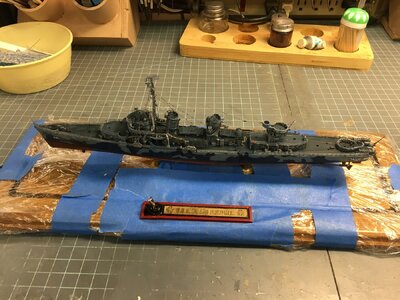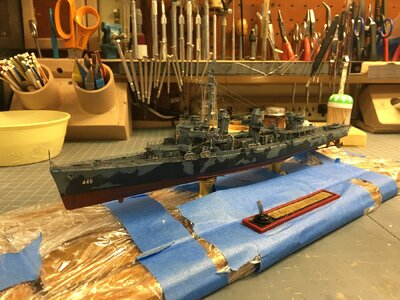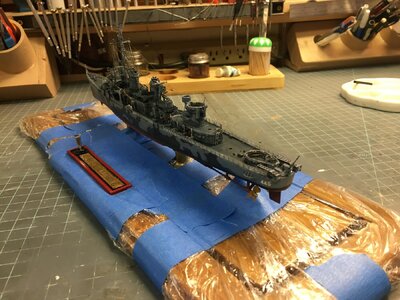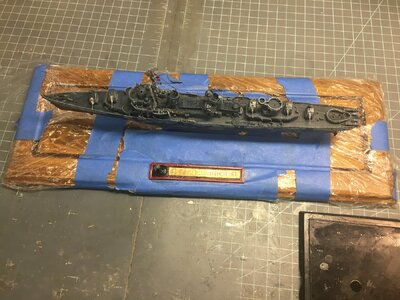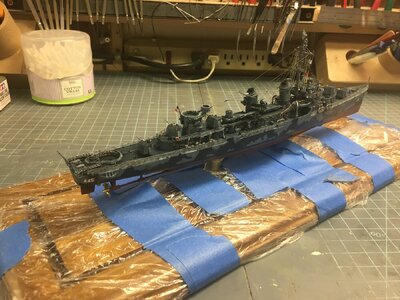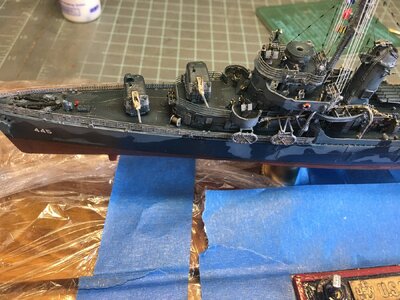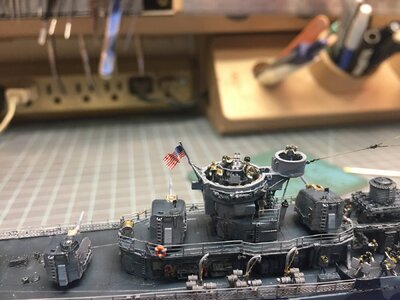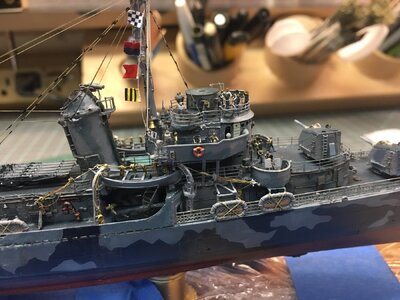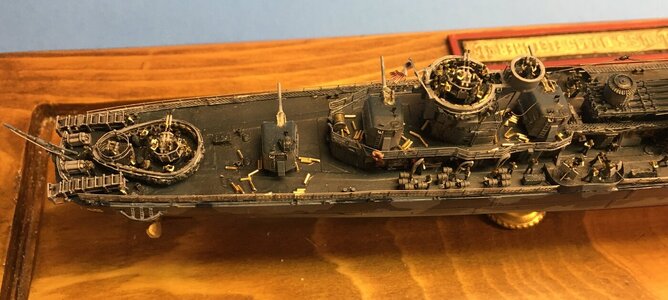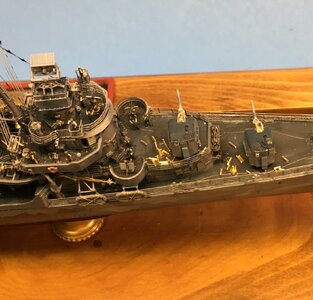- Joined
- May 8, 2021
- Messages
- 26
- Points
- 48

Part 1
This is perhaps unorthodox but I have completed the model and now I am writing about it. I purchased the kit to get me back into building ship models and as a precursor for building the 1/350 Mini Art Enterprise CVN-65. Normally I build 1/48 scale airplanes. At any rate I bought the ship on impulse when I saw it at deep discount on Amazon. I started researching on the internet but I eventually bought the following as references:
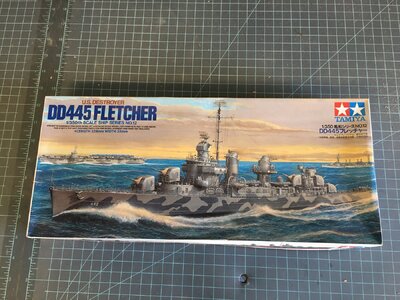
Warship Pictorial 42, Round Bridge Fletchers, Rick E Davis
Kagero Super Drawings in 3D the American Destroyer USS Fletcher 1942, Waldemar Goralski
Squadron Signal On Deck USS Kidd, David Doyle
Squadron Signal Fletcher DD’s in Action, Warship Number 8, Jerry Scutts
Shipcraft Number 8, Fletcher Class Destroyers, Lester Abbey
The first 3 became my primary sources. But there is a wealth of information on line for free also. I found these to be helpful:
http://www.ussfletcher.org/
https://destroyerhistory.org/fletcherclass/ussfletcher/
http://www.navsource.org/archives/05/445.htm
https://www.shipcamouflage.com/index.htm
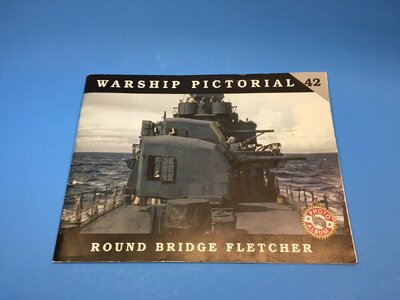
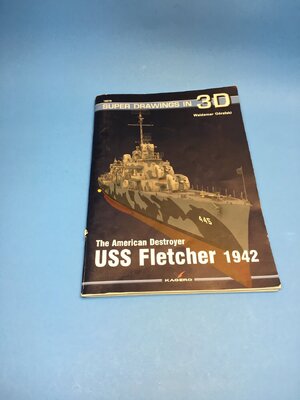
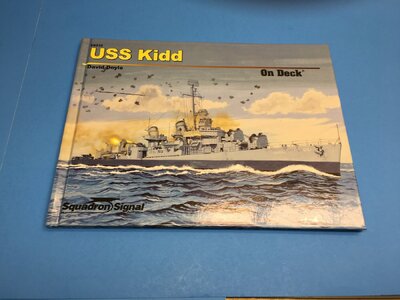
In addition to the kit I also got the following upgrade sets:
Eduard 1/350 Photoetch set for the Tamiya USS Fletcher 53003
Infini Models Brass Mast set for the Tamiya USS Fletcher IMS 35005
Black Cat Models Round Bridge Fletcher 1943 Detail Set for Tamiya Kit CK350001
Master Models 5 inch 38 SM-350-017 (20 Brass Barrels)
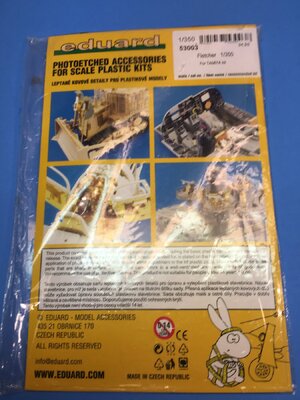
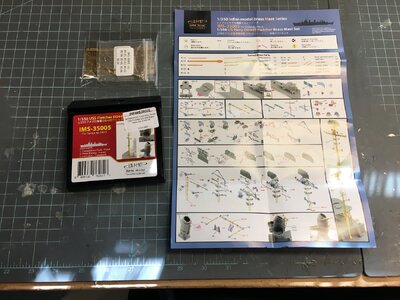
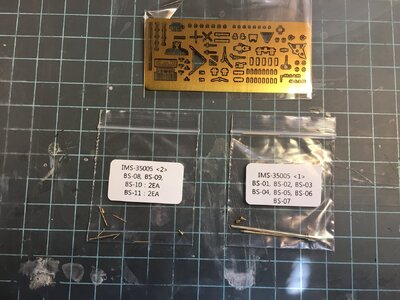
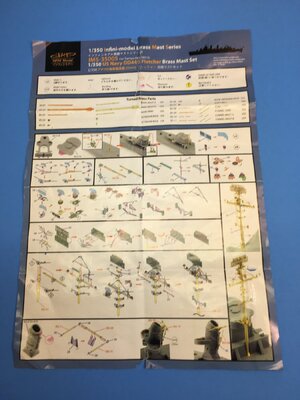
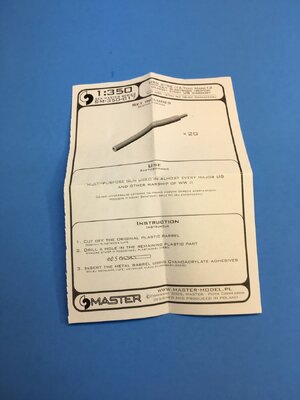
In my stash of photoetch I have various railings, doors, hatches, portholes, ladders, gratings and structural components.
After seeing the quality of the Black Cat set I got several of their 1/350 stand-alone sets including figures, bitts, fairleads, anchors, lockers, life rings, hand wheels on pipe sections and draped firehoses. I also obtained a set of twin 40mm guns and a set of 20 mm guns. Most of these parts are also compatible with my Enterprise kit also.
The kit comes in a sturdy top opening box with typical excellent Tamiya artwork on the sides and top. Inside are four sprues of gray plastic parts, (two are identical) and a separate full hull. The instructions cover assembly in 5 steps. There is a gray scale drawing for painting the camouflage pattern. A small decal sheet with hull numbers 445 – 448 and some national ensigns. A bag of polycaps is also included. There are some generic instruction inserts and a set of black and white peel off stickers for the nameplate. Looking over the sprues there is an unused piece which is not mentioned in the instructions but which was handy in modelling the aft 40 mm gun tub. Even though there are 4 sets of hull numbers there are no extra nameplate stickers.
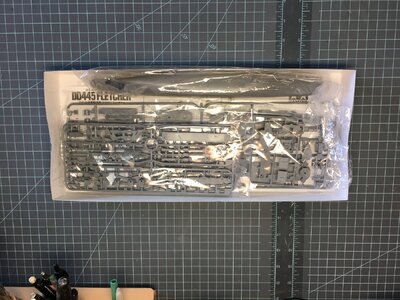
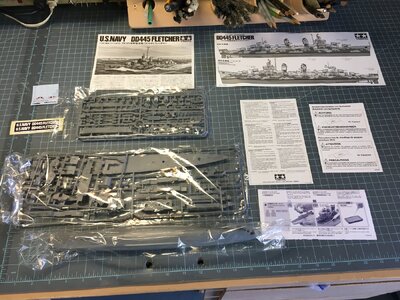
My goal was to display the ship on brass plinths on a dedicated display base with a Plexiglas cover. It would have modifications to the hull to represent all plating and full hawse pipes. The sonar and depth finder housings would be added. The ship would appear to be underway and firing on a low flying target on the port beam. My research indicated that prior to leaving for the Solomon Islands, a second twin 40 mm mount and director were added to the fantail. In addition at some point another single 20 mm gun was installed on the deck above the pilothouse. These modifications would also be added to the model.
The Infini mast set will produce a delicate and highly detailed replica of the Fletcher’s mast. There are parts to replace the kit items for aft funnel and a battle ensign staff on the funnel. This can be modified to be used on the gun tub on the aft deckhouse where it was located on Fletcher. Eduard’s set for the ship has two frets a large one and a small one. There is plenty of railing and netting to do the full ship. There are doors and hatches, an antenna for the SC – 4 “bedspring” radar atop the mast as well as a nice antenna for the Mk - 37 director. There are thinned wave breaks and midships 20 mm gun tubs. There is a plethora of details to upgrade the model.
The Black Cat kit has the tiniest jewel like parts to replace all the weapons, searchlights, bridge details, whaleboats and the Mk – 37 director. These 3d printed parts have breathtakingly delicate detail. There are even auxiliary gun sights on the five inch mounts. Great care must be taken when working with these items as they are EXTREMELY FRAGILE.
A bit later in the build it occurred to me that I could open the pilot house doors and light the pilot house. I purchased some LED lighting kits from Evan Designs.
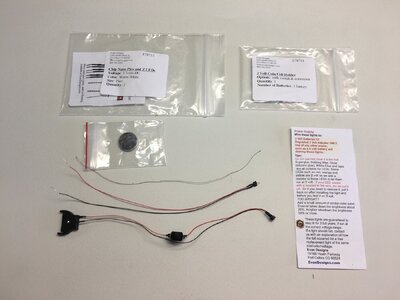
This covers the first installment. As I figure this site out I will be adding more. In the next I will cover the hull mods and the display base.
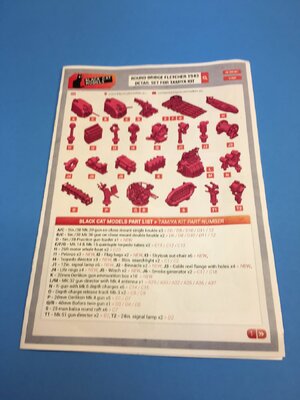

This is perhaps unorthodox but I have completed the model and now I am writing about it. I purchased the kit to get me back into building ship models and as a precursor for building the 1/350 Mini Art Enterprise CVN-65. Normally I build 1/48 scale airplanes. At any rate I bought the ship on impulse when I saw it at deep discount on Amazon. I started researching on the internet but I eventually bought the following as references:

Warship Pictorial 42, Round Bridge Fletchers, Rick E Davis
Kagero Super Drawings in 3D the American Destroyer USS Fletcher 1942, Waldemar Goralski
Squadron Signal On Deck USS Kidd, David Doyle
Squadron Signal Fletcher DD’s in Action, Warship Number 8, Jerry Scutts
Shipcraft Number 8, Fletcher Class Destroyers, Lester Abbey
The first 3 became my primary sources. But there is a wealth of information on line for free also. I found these to be helpful:
http://www.ussfletcher.org/
https://destroyerhistory.org/fletcherclass/ussfletcher/
http://www.navsource.org/archives/05/445.htm
https://www.shipcamouflage.com/index.htm



In addition to the kit I also got the following upgrade sets:
Eduard 1/350 Photoetch set for the Tamiya USS Fletcher 53003
Infini Models Brass Mast set for the Tamiya USS Fletcher IMS 35005
Black Cat Models Round Bridge Fletcher 1943 Detail Set for Tamiya Kit CK350001
Master Models 5 inch 38 SM-350-017 (20 Brass Barrels)





In my stash of photoetch I have various railings, doors, hatches, portholes, ladders, gratings and structural components.
After seeing the quality of the Black Cat set I got several of their 1/350 stand-alone sets including figures, bitts, fairleads, anchors, lockers, life rings, hand wheels on pipe sections and draped firehoses. I also obtained a set of twin 40mm guns and a set of 20 mm guns. Most of these parts are also compatible with my Enterprise kit also.
The kit comes in a sturdy top opening box with typical excellent Tamiya artwork on the sides and top. Inside are four sprues of gray plastic parts, (two are identical) and a separate full hull. The instructions cover assembly in 5 steps. There is a gray scale drawing for painting the camouflage pattern. A small decal sheet with hull numbers 445 – 448 and some national ensigns. A bag of polycaps is also included. There are some generic instruction inserts and a set of black and white peel off stickers for the nameplate. Looking over the sprues there is an unused piece which is not mentioned in the instructions but which was handy in modelling the aft 40 mm gun tub. Even though there are 4 sets of hull numbers there are no extra nameplate stickers.


My goal was to display the ship on brass plinths on a dedicated display base with a Plexiglas cover. It would have modifications to the hull to represent all plating and full hawse pipes. The sonar and depth finder housings would be added. The ship would appear to be underway and firing on a low flying target on the port beam. My research indicated that prior to leaving for the Solomon Islands, a second twin 40 mm mount and director were added to the fantail. In addition at some point another single 20 mm gun was installed on the deck above the pilothouse. These modifications would also be added to the model.
The Infini mast set will produce a delicate and highly detailed replica of the Fletcher’s mast. There are parts to replace the kit items for aft funnel and a battle ensign staff on the funnel. This can be modified to be used on the gun tub on the aft deckhouse where it was located on Fletcher. Eduard’s set for the ship has two frets a large one and a small one. There is plenty of railing and netting to do the full ship. There are doors and hatches, an antenna for the SC – 4 “bedspring” radar atop the mast as well as a nice antenna for the Mk - 37 director. There are thinned wave breaks and midships 20 mm gun tubs. There is a plethora of details to upgrade the model.
The Black Cat kit has the tiniest jewel like parts to replace all the weapons, searchlights, bridge details, whaleboats and the Mk – 37 director. These 3d printed parts have breathtakingly delicate detail. There are even auxiliary gun sights on the five inch mounts. Great care must be taken when working with these items as they are EXTREMELY FRAGILE.
A bit later in the build it occurred to me that I could open the pilot house doors and light the pilot house. I purchased some LED lighting kits from Evan Designs.

This covers the first installment. As I figure this site out I will be adding more. In the next I will cover the hull mods and the display base.


Last edited:



